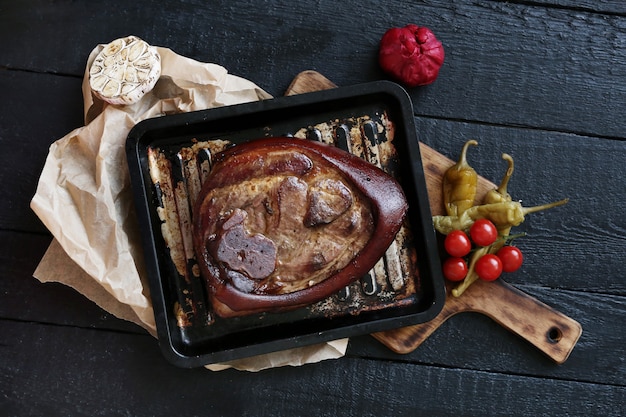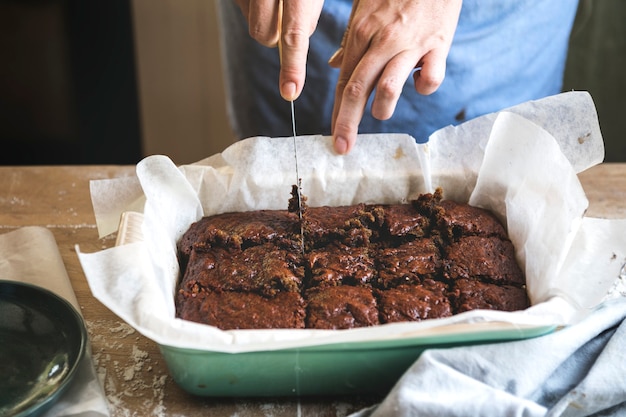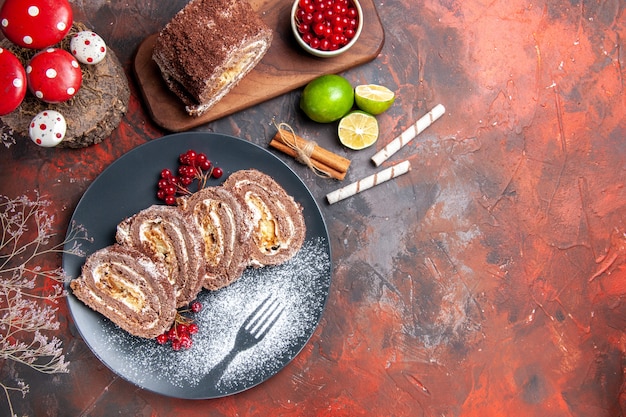Meatloaf. Just the word evokes images of warm, comforting dinners, family gatherings, and hearty, satisfying meals. It’s a true culinary chameleon, able to transform from a simple weeknight supper to a sophisticated centrepiece for a dinner party.
But let’s be honest – the whole cooking time thing can be a bit of a head-scratcher. No one wants a dry, overcooked meatloaf, and we all want to be confident it's cooked through.
This guide will be your secret weapon, your meatloaf maestro, your personal guide to cooking the perfect loaf every time. We'll cover everything from the meat itself to those final, oh-so-important resting minutes. So, grab your apron, gather your ingredients, and let's get cooking!
(Part 1)
Choosing the Meat: Building Your Flavour Foundation

Now, before we get all fancy with ingredients and toppings, let’s talk about the star of the show – the meat!
Beef: The Classic Choice
For me, nothing beats a good old-fashioned beef mince. It’s got that robust, earthy flavour that just screams "comfort food." It’s reliable, it’s familiar, and it’s always a crowd-pleaser.
Pork: A Touch of Sweetness
Pork mince adds a touch of sweetness and a slightly more delicate flavour to the meatloaf. It’s a great option if you’re looking for something a bit lighter than beef.
Lamb: A Rich and Robust Flavour
If you’re feeling adventurous, try using lamb mince. It’s got a strong, distinctive flavour that will make your meatloaf truly stand out.
Mixing It Up: A Symphony of Flavours
My favourite trick? A blend of beef and pork mince. It combines the best of both worlds, giving you a well-balanced flavour that's both robust and slightly sweet. Experiment with different ratios – I usually go for a 50/50 mix, but you can adjust to your liking.
Beyond the Basics:
There's a whole world of possibilities beyond these classic choices. Feel free to explore! Duck, venison, or even a mix of ground chicken and sausage can add exciting flavours and textures to your meatloaf.
(Part 2) Building Your Loaf: The Art of Shaping

So, you've chosen your meat, mixed in your ingredients, and now it's time to shape it all into a glorious loaf. Here's where a bit of culinary artistry comes into play.
The Loaf Pan: Your Meatloaf Mould
A standard 9x5 inch loaf pan is a classic choice for a reason. It gives you the perfect size for a meatloaf that serves 4-6 people.
The Hands-On Approach:
I like to use my hands to shape the meatloaf directly in the pan, pressing it firmly and evenly to create a compact loaf. You can also line the pan with parchment paper or foil for easier removal and a quicker clean-up.
Tips for Shaping Perfection:
Make a slight indentation in the center: This helps to prevent the meatloaf from cracking during cooking.
Get creative: Want to impress your dinner guests? Give your meatloaf a decorative touch! A criss-cross pattern, a few ridges, or a simple swirl adds a touch of elegance.
Don't overwork the mix: Avoid over-mixing the meatloaf mixture, as this can result in a tough texture.
Glazing for Shine and Flavor:
Before you pop your meatloaf into the oven, it's time for a little glaze. This adds a beautiful shine and helps to lock in moisture, ensuring a juicy and flavorful loaf.
Classic Ketchup and Brown Sugar: This simple mixture is a timeless favourite. The ketchup adds a touch of sweetness and tang, while the brown sugar provides a caramelized glaze.
Worcestershire Sauce and Mustard: For a more savory glaze, try a blend of Worcestershire sauce and Dijon mustard. This combo adds a complex, umami flavour.
Get Creative: There's a whole world of potential glazes out there! Try adding a touch of honey, maple syrup, or even a splash of balsamic vinegar for a unique flavor profile.
(Part 3) The Oven Awaits: Time to Bake

We're ready for the grand finale - the baking!
meatloaf baking Time: A Guide
The baking time will vary depending on the size of your meatloaf. Here's a handy guide:
Small Meatloaf (1-1.5 pounds): Bake for 45-60 minutes at 350 degrees fahrenheit (175 degrees Celsius).
Medium Meatloaf (2-2.5 pounds): Bake for 1 hour 15 minutes to 1 hour 30 minutes at 350 degrees Fahrenheit (175 degrees Celsius).
Large Meatloaf (3 pounds or more): Bake for 1 hour 45 minutes to 2 hours at 350 degrees Fahrenheit (175 degrees Celsius).
Temperature is Key:
The most important thing to remember is that your meatloaf needs to reach an internal temperature of 160 degrees Fahrenheit (71 degrees Celsius) to ensure it's cooked through and safe to eat.
Checking for Doneness:
Use a meat thermometer to check the internal temperature. Insert it into the thickest part of the loaf and ensure it reaches at least 160 degrees Fahrenheit. No need to guess!
(Part 4) Resting Time: Patience is a Virtue
Your meatloaf is cooked, the timer has gone off, and your stomach is rumbling. But hold on! Don't jump right in and start slicing. Meatloaf needs a little rest time to let all those delicious juices redistribute.
The Resting Period:
Let the meatloaf rest for 10-15 minutes before slicing. This allows the meat to relax and firm up slightly, making it easier to slice evenly and preventing it from crumbling.
Slicing Up Success:
Use a sharp knife to make clean, even cuts. And remember, patience is key! Resist the temptation to slice into the meatloaf before it's rested.
(Part 5) Serving Up Deliciousness: The Perfect Accompaniments
Your meatloaf is finally ready to enjoy! But what to serve with it?
Classic Companions:
mashed potatoes: A timeless combination that's sure to please.
Gravy: A rich, flavorful gravy adds a touch of indulgence to any meal.
green beans: A simple yet satisfying side dish that balances the richness of the meatloaf.
Corn: Sweet and juicy, corn is a vibrant addition to the table.
Beyond the Basics:
Roasted Vegetables: Roasted vegetables, like asparagus, Brussels sprouts, or carrots, add a touch of sophistication.
Salad: A fresh salad balances the heaviness of the meatloaf and adds a burst of freshness.
Bread: A crusty bread, like sourdough or ciabatta, is perfect for soaking up the delicious juices.
(Part 6) Tackling Meatloaf Mishaps: Troubleshooting Tips
Let's face it, even the best cooks have meatloaf mishaps sometimes.
Common Meatloaf Problems:
Dry Meatloaf: Overcooked, or not enough moisture in the mixture.
Cracked Meatloaf: Overmixed, or not rested long enough before slicing.
Meatloaf Falls Apart: Not bound together well enough.
Fixing Meatloaf Mishaps:
Dry Meatloaf: Next time, add more moisture to the mix. Use extra liquid, like milk or stock, or add more moisture-rich ingredients like grated zucchini or diced tomatoes.
Cracked Meatloaf: Avoid over-mixing the meatloaf mixture, and make sure it rests for at least 10 minutes before slicing.
Meatloaf Falls Apart: Bind the meatloaf mixture well with breadcrumbs, oats, or a small amount of egg.
(Part 7) The Leftover Love: Making the Most of Your Meatloaf
Leftovers! The best part, right? But don't just reheat it. Get creative!
Creative Leftover Ideas:
Meatloaf Sandwiches: Slice up your leftover meatloaf and serve it on toasted bread with a dollop of mustard, pickles, or a slice of cheese.
Meatloaf Salad: Dice up the leftover meatloaf and combine it with your favourite salad ingredients, like lettuce, tomatoes, onions, and a vinaigrette dressing.
Meatloaf Soup: Use leftover meatloaf to create a hearty soup by simmering it in broth with vegetables and pasta.
Meatloaf Pizza: Spread leftover meatloaf over pizza dough, top with cheese and your favourite pizza toppings, and bake until golden brown.
Freezing for Future Feasts:
Want to make a big batch and enjoy meatloaf for days or even weeks? You can freeze cooked meatloaf for up to 3 months.
Freezing Instructions: Wrap the cooked meatloaf tightly in plastic wrap and then in foil. Place it in a freezer bag and freeze for up to 3 months.
Thawing and Reheating: To thaw, place the frozen meatloaf in the refrigerator overnight. Reheat it in a preheated oven at 350 degrees Fahrenheit (175 degrees Celsius) until heated through.
(Part 8) meatloaf faqs: Your Burning Questions Answered
Let's address some common questions about meatloaf.
FAQs
| Question | Answer |
|---|---|
| How do I know if my meatloaf is cooked through? | The best way to tell if your meatloaf is cooked through is to use a meat thermometer. Insert the thermometer into the thickest part of the loaf and make sure it reaches an internal temperature of 160 degrees Fahrenheit (71 degrees Celsius). |
| Can I add cheese to my meatloaf? | Absolutely! Cheese is a classic addition to meatloaf. You can add it to the meat mixture or use it as a topping. Cheddar, mozzarella, and even crumbled blue cheese are delicious additions. |
| What's the best way to glaze my meatloaf? | A simple glaze of tomato ketchup and brown sugar works wonders. You can also use a mixture of Worcestershire sauce and mustard. Try adding a touch of honey or maple syrup for a sweet and savory glaze. |
| Can I freeze leftover meatloaf? | Yes, you can freeze cooked meatloaf for up to 3 months. Wrap it tightly in plastic wrap and then foil and place it in a freezer bag. |
| What are some creative ways to use leftover meatloaf? | There are tons of creative ways to use leftover meatloaf, like making sandwiches, salads, soup, or even pizza. Get creative and experiment with different flavour combinations! |
There you have it! Now you've got the tools, the knowledge, and the inspiration to cook a meatloaf that will make you the hero of your next dinner party. And remember, it's all about having fun, experimenting, and creating something delicious that your loved ones will adore. So get in the kitchen and let your meatloaf masterpiece shine!
Everyone is watching

How to Cook Frozen Lobster Tails Perfectly: A Step-by-Step Guide
RecipesLobster. Just the word conjures up images of lavish meals, special occasions, and a taste of luxury. But let's...

Pigs in a Blanket Cooking Time: How Long to Bake for Perfect Results
RecipesAh, pigs in a blanket. Just the name conjures up images of those delightful little parcels of crispy pastry en...

Pork Fillet Cooking Time: How Long to Cook It Perfectly
RecipesPork fillet, or tenderloin as it's sometimes called, is a real favourite in our house. It's so versatile, and...

The Ultimate Guide to Cooking Delicious Frankfurters
RecipesLet's face it, we all love a good frankfurter. It's a classic, simple, and always satisfying. But let's be rea...

The Ultimate Guide to Tender, Juicy Pulled Pork
RecipesRight, let's talk pulled pork. It's one of those dishes that just screams "comfort food," doesn't it? I mean...
